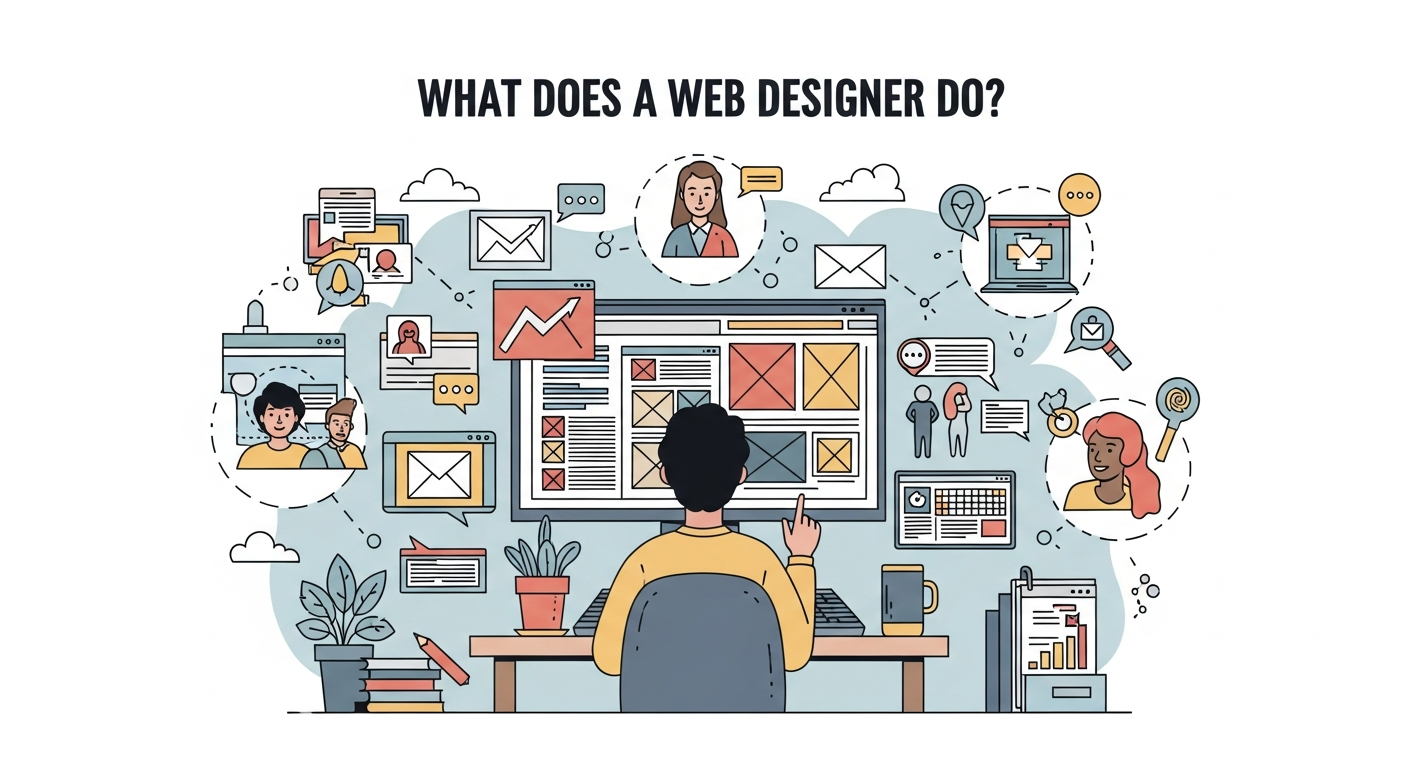What Does a Web Designer Do? | Roles, Skills & Responsibilities
Web designers work in various environments, such as digital design agencies or in-house development, marketing or research teams. Many also freelance, which allows them to be flexible in managing their own schedule and projects.
Workplace skills involve being able to communicate design ideas clearly, work collaboratively with team members, be familiar with design software such as HTML/CSS coding languages.
Designing the Visual Aspects of Websites
Web designers use design software to craft visual elements, layouts and icons that represent their website’s overall brand. Additionally, they apply user experience principles and research data to create intuitive interfaces that offer users a positive user experience.
Web designers may work for one company directly or as part of a team at a design agency that serves multiple clients. Freelancers also have the freedom to select projects they take on while setting their own rates and hours.
Understanding Client Needs
Before embarking on any project, web designers meet with clients to establish their objectives and specific website needs. In addition, they analyze competing websites as well as the established best practices of web design to inform the planning phase.
Web designers use wireframes and low-fidelity prototyping tools to design the skeletal framework of pages on websites, then add visuals that give their site its unique character, such as photos, graphics, or animations.
As part of their design process, designers collaborate with frontend developers to ensure that websites are built accurately and function optimally across devices. Furthermore, they optimize load time by minimizing image sizes, reducing heavy scripts, and using content delivery networks; this ensures webpages display quickly and consistently for all users. Finally, accessibility features like alternate text for images and keyboard navigation are integrated into designs as part of this process.
Collaborating with Other Professionals
Web designers may work independently or for design agencies. Their professional skills vary significantly; some transition into web designing from other fields like computer science, graphic design or advertising. Web designers may also pursue professional certifications to expand their resume and gain industry credibility.
Dependent upon their level of experience, a web designer may specialize in specific areas like e-commerce website design or responsive web design. No matter which specialization they focus on, though, they must still create engaging user-friendly designs in line with a company’s brand and mission statement.
They will often need to collaborate with a team of other professionals, such as web developers and content creators, in order to gather feedback on their design concepts and make any necessary modifications – this also ensures that the finished product meets both technical and aesthetic standards.
Web designers should always be ready to respond quickly and thoughtfully to questions and comments, whether working alone or as part of a team. This is particularly crucial if the creative process requires iterative revisions, or critical information needs to be communicated between teams – such as reviewing content concepts, authorizing image purchases or providing technical details for development and launch. Collaborative project management tools like Ycode can streamline this workflow and help teams remain productive.
Developing Websites
Web Designers often work as part of a team of developers and must be able to effectively convey their design ideas. Furthermore, they need an understanding of basic programming languages like HTML, CSS and JavaScript in order to construct websites from scratch. Web designers who operate independently may require additional skills that meet client or stakeholder needs more effectively, such as SEO knowledge.
Web Designers employ wireframes when developing websites. This type of visual roadmap enables Web Designers to test out design concepts before having them built by programmers.
Once a wireframe has been approved, Web Designers begin designing the site’s graphic elements according to project goals and their own personal tastes. Utilizing design software they construct high-fidelity prototypes that meet brand strategy and content requirements as well as create image assets like logos or color schemes that evoke specific emotions or moods.
Some e-commerce websites require both visual complexity (product galleries, promotions) and specific functionality (payment processing, inventory management). When this occurs, Web Designers work closely with developers to ensure the new designs will fit within existing code and technical requirements.
Maintaining Websites
Web designers must continuously advance their skills and stay abreast of emerging technology and tools, such as enrolling in online courses, workshops or bootcamps; watching YouTube tutorials; or following design blogs regularly.
Effective Web Designers must possess strong organizational skills in order to effectively oversee multiple projects at once and meet deadlines, which may necessitate altering project scope based on client feedback or performance statistics of websites; additionally they should be quick in responding when technical issues arise, such as when servers or hosts go offline.
Web Designers specialize in visual elements of websites while web developers specialize in their structure and coding, both being essential components for success in any website’s success. Design professionals employ their knowledge of design software to craft visually appealing layouts, icons and other graphical elements, taking user experience principles into account when crafting user-friendly interfaces. Additionally, they collaborate with research and marketing teams to incorporate brand elements into websites in line with business goals and user expectations. Web designers may also be responsible for creating website assets, specifications and mockups to be handed off to development teams as well as conducting quality assurance testing. Web designers typically work at digital design agencies or can work independently as freelancers who take on clients on an on-contract basis.
Also Read: Website Design Ideas for Small Business


